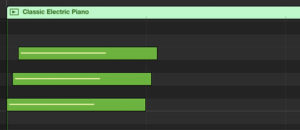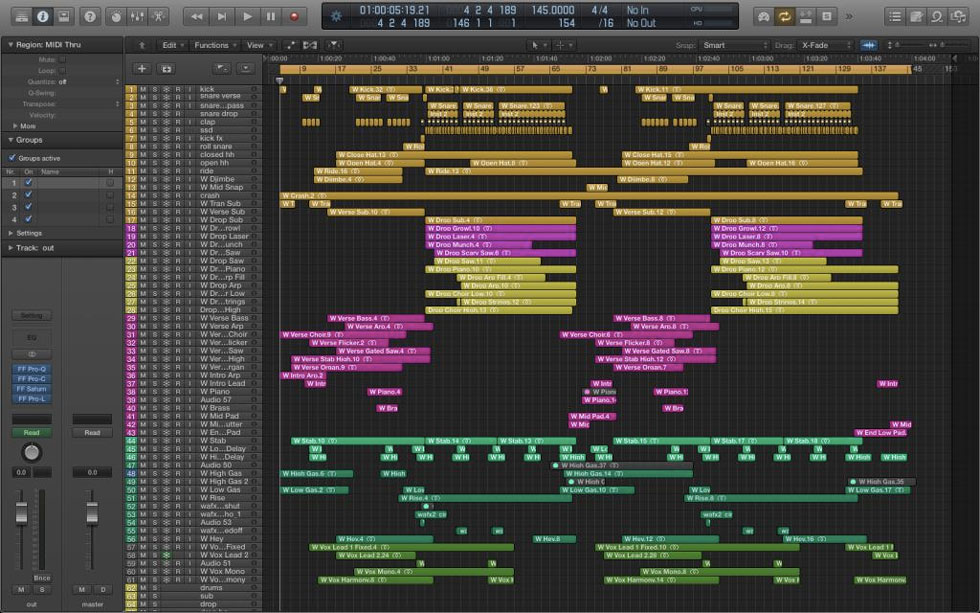Timing problems with dense MIDI arrangements
Move over, buddy
In dense arrangements through a single MIDI cable, the notes and events struggle for the same positions. This is especially true for heavily quantized MIDI data. And this can create noticeable latency that affects the groove.
Since MIDI is a serial protocol it is not possible for two events to land on the exact same position. This means that chords actually are very fast arpeggios.

For a single riff or a simple groove this is not noticeable, but for dense arrangements with many instruments and parts or lots of controller data, the groove may be affected negatively. This can make you work quite hard to get the feeling you need,
Boil it down and thin it out
Therefore it is best to limit the data stream over a single MIDI cable to the absolute minimum.
This can be done by soloing MIDI channels or events, and recording or bouncing them individually to tape or a DAW. Then that part can use the full bandwidth to play as precisely as possible.
You can also thin out any superfluous controller information in the stream. Maybe your keyboard generates After Touch but your synth does not read it. In that case, select the unused controller data in an event list and delete them.
Emergency offset
If you absolutely must play a lot of quantized MIDI over the same cable, try offsetting some of the events by just a single MIDI tick or 2 – forwards or backwards. This can work wonders for the reluctant groove.


